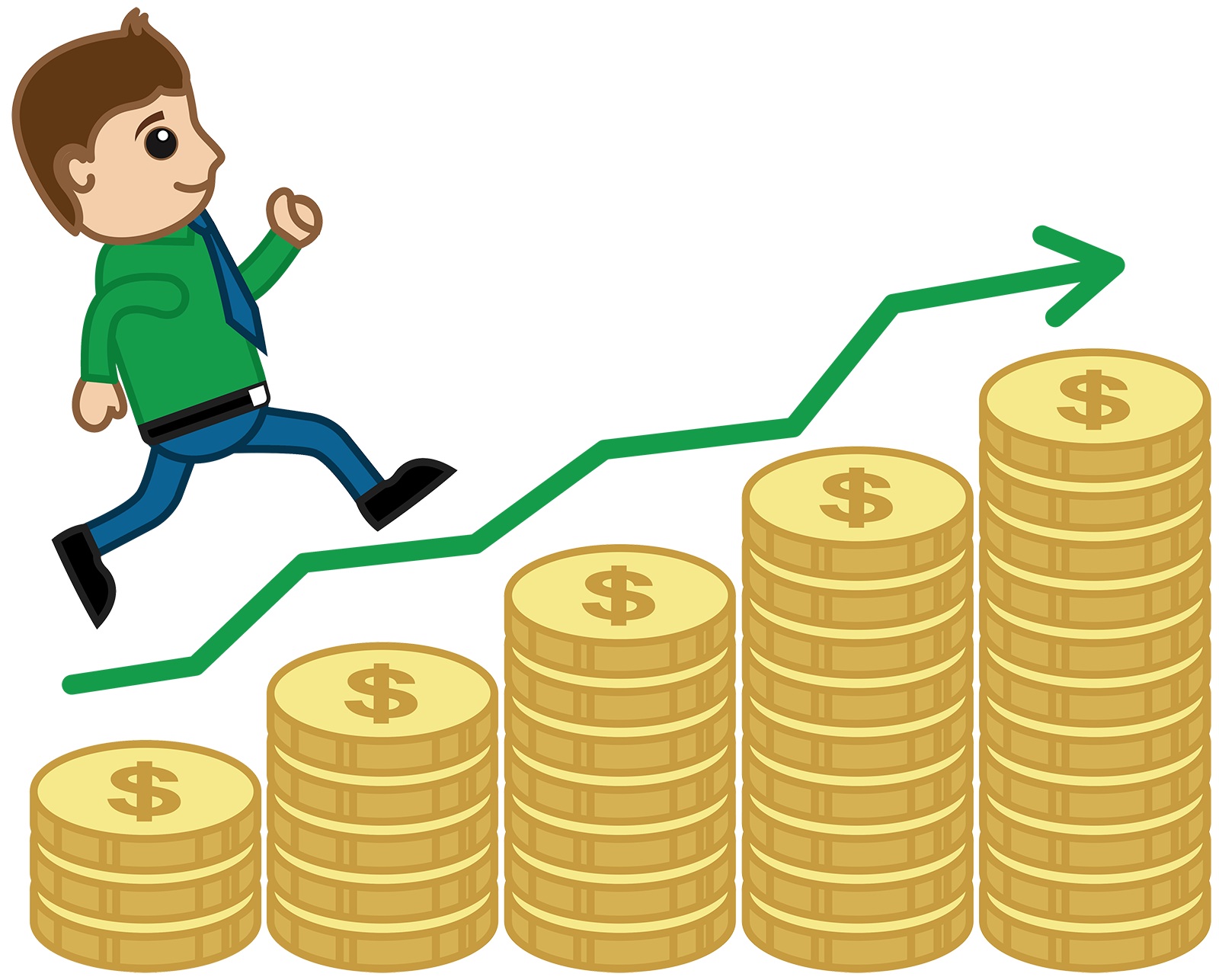Quickly Calculate Weekly Compound Interest
On Lump Sum and/or Regular Deposits Into a High Yield Savings Account
How To Use This Weekly Compound Savings Calculator
The Basics
Use this calculator to quickly figure out how much money you will have saved up during a set investment period. First, enter your initial amount you have set aside, then enter the interest rate along with how long you intend to invest for.
Next enter how much money you intend to deposit or withdrawal daily. If this calculation is for a lump sum deposit with no recurring transactions enter "Never" in the "add money" drop down.
Once you have entered this information the calculator will inform you of how much money you will have saved up before income taxes, how much income tax you'll owe & what the remaining amount of money is worth in real terms after accounting for inflation.
Calculations update automatically when any input is changed. If you have a particular savings goal you want to reach by a specific date then please use our savings goal calculators.
If you would like to print out a schedule of your savings growth over time, please click on the "Create Growth Table" button to generate a printable schedule of your payment history, accumulated interest & balance.
Understanding The Opportunity Cost of Routine "Inexpensive" Habits
Many seemingly simple pleasures in life have dramatic longterm costs.
It is easy for a person to drink a $4 latte on the way to work or smoke a $7 pack of cigarettes every day and not feel like they are spending much, but if that money was instead saved and invested into a savings account earning 3% or invested in the stock market & compounded at 8% annually for 20 or 30 years it would amount to a princely sum, as shown in the table below, given regular deposits & daily compounding throughout the investment term.
| Product | Latte | Cigarettes |
| Price | $4.00 | $7.00 |
| Frequency | 5x weekly | daily |
| Annual Cost | $1,000.00 | $2,555.00 |
| Spent over 20 Years | $20,000.00 | $51,100.00 |
| 20 Years Interest at 3% APR | $7,404.71 | $18,919.05 |
| 20 Year Total Savings @ 3% | $27,404.71 | $70,019.05 |
| 20 Years Interest at 8% APR | $29,412.88 | $75,149.91 |
| 20 Year Total Savings @ 8% | $49,412.88 | $126,249.91 |
| Spent over 30 Years | $30,000.00 | $76,650.00 |
| 30 Years Interest at 3% APR | $18,654.40 | $47,662.00 |
| 30 Year Total Savings @ 3% | $48,654.40 | $124,312.00 |
| 30 Years Interest at 8% APR | $95,280.93 | $243,442.77 |
| 30 Year Total Savings @ 8% | $125,280.93 | $320,092.77 |
Many bad habits also increase stress while deteriorating health, adding additional costs not reflected in the above table.
Converting Irregular Expenses Into Daily Equivalents
In the above table we presumed a person was drinking a latte on each work day. If the average person works 5 days a week and works 50 weeks per year this would create 250 transactions per year (5 * 50). From there, you could divide that number by the number of days in the year (250/365 = 0.6849315068493151) to created a percent of days frequency. You then multiply that number by the expense per transaction (e.g. $4) and then come up with the equivalent daily cost of $2.739726. If a person drank a coffee at lunch time & also drank another on the way to work then you would multiply the result by 2.
Once you have the daily equivalent expense for one transaction you can then add it to the expense of another daily transaction to get a total habit cost. For example, if a person smoked a half of a pack of cigarettes per day that would convert that $7 into $3.50 (7/2). Add that to the $2.739726 daily coffee expense and a person would spend $6.239726 daily between the two habits.
If the person also consumed a coffee on every Sunday (work weeks and on weeks they had off from work) then you could add that expense by multipling the frequency (1/7) by the price per transaction $4.00 by the number of periods (52 weeks in a year).
If a person wanted to calculate the cost difference between options then they could subtract the cheaper alternative from the purchase price. For example, if a person ate a 5 cent caffeine pill (they are super cheap if bought in bulk from grocery stories or online on sites like Amazon.com) instead of drinking a $4.00 latte they'd use $3.95 per transaction as their cost in the above calculation.
Calculation Mechanics
How Interest is Compounded
Our calculator compounds interest each time money is added. If the account has a lump-sum initial deposit & does not have any periodic deposit, by default interest is compounded daily. Most bank savings accounts use a daily average balance to compound interest daily and then add the amount to the account's balance monthly.
Most years have 365 days, while leap years have 366 days. This means there is a bit more than 52 weeks in the average year, with there being 52 weeks and 1 day in most years while there is 52 weeks and 2 days on leap years.
As each year averages 365.25 days, the APR for daily compounding is divided by 365.25 and compounded every day, which is what increases the APY above the stated APR rate.
If you would like to change the compounding frequency for a one-time deposit then set the "deposit each cycle" & "withdrawal each cycle" variables to $0 and select "transaction frequency" at whatever frequency you wish to compound interest.
When Contributions Are Made
In the above calculator when recurring account contributions are made, money is added or subtracted at the beginning of each day. If you would like to end money at the end of each day then you would subtract the regular contribution amount from the initial savings to calculate interest at the end of the day.
For example, if you had $500 of savings for the initial deposit and wanted to deposit $10 at the end of each day you would set the initial deposit to $490. The first $10 deposit would be added to the $490 upfront to base the initial interest calculation off $500.
How Income Taxes Are Accounted For
This calculator estimates taxes based on the rate entered with the tax payment made at the end of the investment period. This approach is how tax payments would work on savings stored inside a tax deferred retirement account.
Ordinary interest on a regular bank savings account is typically paid for on an annual basis, with banks sending account holders a 1099-INT if they earn above some baseline level of around $10 in interest. If your account is untaxed then enter zero as the marginal tax rate in the above calculator.
How Inflation is Accounted For
After taxes are deducted from interest earnings & final savings are calculated, inflation is accounted for by multiplying the final amount by (100% - inflation rate)years



I very frequently get the question:
'What's going to change in the next 10 years?' And that is a very interesting question; it's a very common one. I almost never get the question: 'What's not going to change in the next 10 years?' And I submit to you that that second question is actually the more important of the two — because you can build a business strategy around the things that are stable in time. … [I]n our retail business, we know that customers want low prices, and I know that's going to be true 10 years from now. They want fast delivery; they want vast selection. It's impossible to imagine a future 10 years from now where a customer comes up and says, 'Jeff I love Amazon; I just wish the prices were a little higher,' [or] 'I love Amazon; I just wish you'd deliver a little more slowly.' Impossible. And so the effort we put into those things, spinning those things up, we know the energy we put into it today will still be paying off dividends for our customers 10 years from now. When you have something that you know is true, even over the long term, you can afford to put a lot of energy into it." - Jeff Bezos

